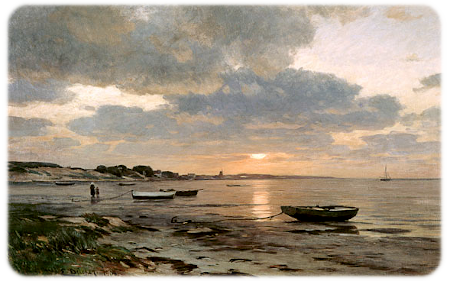Tetramyxa

Note that the following article incorrectly called a gall-forming plasmodiophorid on the seagrass Halophila as Tetramyxa parasitica: Marziano, F., R. Villari, and G. Tripodi. 1995. A plasmodiophorid fungal parasite of the seagrass Halophila stipulacea. Mycotaxon 55: 165-170.
In a thorough study of gall-forming parasites of the seagrass Halophila, Kolátková et al (2020) clearly showed that the organism reported by Marziano et al was distinct from T. parasitica, and placed the organism along with another phytomyxid parasite on Halophila in a new genus, Marinomyxa Kolátková, Čepička, Hoffman et Vohník.
Personal Comments
Collecting Tetramyxa took several years. The first attempt was when I was visiting Stefan Buczacki's lab at the then National Vegetable Research Station in Wellesbourne, UK, in 1982. I was there to work on Plasmodiophora brassicae, but got sidelined briefly into collecting Polymyxa betae and into trying to get Tetramyxa. Stefan arranged for us to get the herbarium sheet of Ruppia sp. with a dried gall caused by Tetramyxa that was referred to in Karling's 1968 book (page 48) as an early collection of Tetramyxa. The sheet was in the Father Reader Herbarium at the University of Bristol. It was a pleasure to be able to photograph the sheet. Stefan and I set off to the southern coast of the UK on a rainy day to see if we could locate either infected Ruppia or Triglochin. We did not find any infected plants, but we had a great time wandering along the coast in the rain and having a lunch by the fire in a cozy pub. Stefan eventually left NVRS and went on to become a well-known radio personality and popular gardening author throughout the UK.
I, on the other hand, was still looking for Tetramyxa. When I arranged my first trip to Scandinavia to collect Callitriche with Sorodiscus in 1986, I contacted Guy Hällfors of the Tvärminne Zoological Station in Finland. Guy met me at the train station in Helsinki and took me to Tvärminne where I stayed for a few days. He and I could not find any infected Ruppia in that area, so he arranged for me to visit Carl-Adam Hæggström at the Nåto Biological Station in the Åland Islands between Finland and Sweden. I spent a few days in Turku, then took a ferry to Mariehamm where I met Prof. Hæggström and his lovely family. (I was told several years later that the Hæggström couple was known affectionately throughout Scandinavia as "Adam and Eve."). The Hæggströms were perfect hosts, and showed me a lot of the Åland Islands, a place very few Americans have visited.
They introduced me to some very interesting people. We were invited to a delightful dinner party that included a sauna right on the shores of the Baltic Sea. When we came out of the sauna to jump into the sea, a male swan was there with his family and chased us along the shore for a while. He eventually stopped when he knew we were not a threat to his family, so we were able to jump into the sea to cool.
We had no problem locating Tetramyxa on several different hosts, and I was able to use the facilities at Nåto Biological Station to prepare the materials for electron microscopy.
Images of Tetramyxa
- Tetramyxa herbarium sheet
- Tetramyxa galls on host
- Tetramyxa sporogenic plasmodia, LMG
- Tetramyxa sporosori, LMG
- Tetramyxa sporosori, TEMG
- Tetramyxa cruciform divisions, TEMG
- Tetramyxa synaptonemal complexes, TEMG
- Tetramyxa serial sections of synaptonemal complex, TEMG
Selected References for Tetramyxa
- Braselton, J. P. 1990. Ultrastructure and karyology of Tetramyxa parasitica (Plasmodiophoromycetes). Can. J. Bot. 68: 594-598.
- Goebel, K. 1884. Tetramyxa parasitica. Flora 67: 517-521.
- Hartog, C. den. 1963. Tetramyxa parasitica, een gal op Ruppia. Gorteria 1: 138-140.
- Kolátková, V., Čepička, I., Hoffman, R. et al. 2020. Marinomyxa gen. nov. accommodates gall-forming parasites of the tropical to subtropical seagrass genus Halophila and constitutes a novel deep-branching lineage within Phytomyxea (Rhizaria: Endomyxa). Microb Ecol. Doi: 10.1007/s00248-020-01615-5
- Luther, H. 1949. Beobachtunger über Tetramyxa parasitica Goebel. Mem. Soc. Fauna Flora Fenn. 25: 88-96.
Copyright © 2019-2025 J. P. Braselton: All rights reserved.
